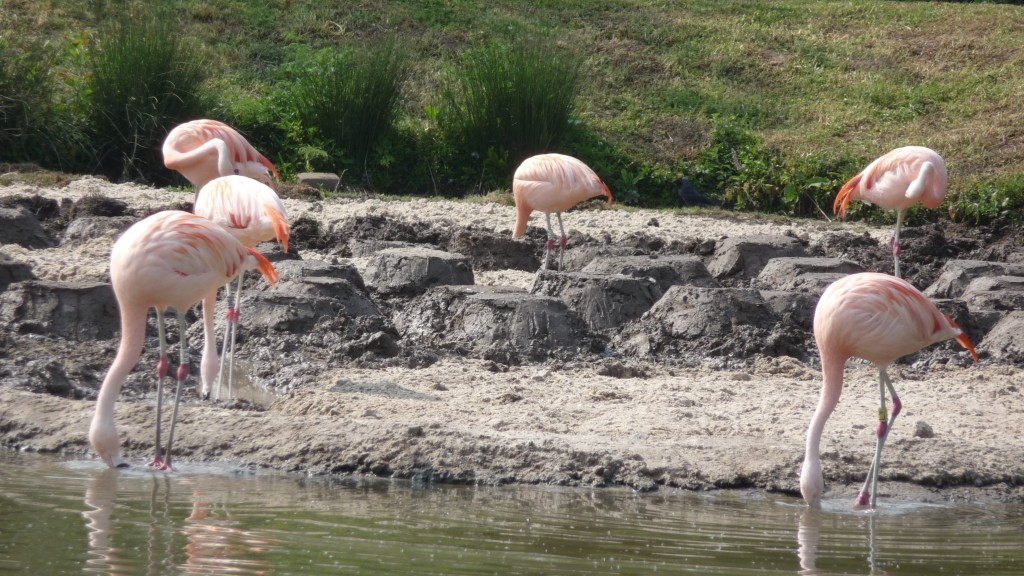Sun, sand and lots of shovelling.
And so the sunshine continues, and with it renewed efforts on the part of the aviculture team to make life even more enjoyable for their pink feathered friends. Today, Phil and his colleagues dug out and re-modelled nests for the Chilean flamingos (the largest flock of flamingos in the South American Pen) in their breeding island at the back of the exhibit. Old nest mounds were broken down and new, more inspiring (hopefully!) turrets of mud were created in their place. Flamingos like to adapt these mud pies to their own liking but the presence of several nest mounds, all crammed closely together, gives them the urge to start thinking about pairing up and nesting. Whilst this refreshing of the nesting area was taking place, piles of sand were shifted into large sections at the front, middle and rear of the island. The sand will provide a comfortable and cushioned surface for the adult flamingo's feed as they go to and fro from their nests, thus keeping the base of their feet in good condition. Alongside of this, sanded areas in the middle of the colony will provide safe "creche" sites for the chicks, where they can group together and be protected by the massed adult birds. More on the peculiarities of flamingo breeding behaviour in future posts, but be sure to check out the beautifully designed nests on display now at WWT Slimbridge.




